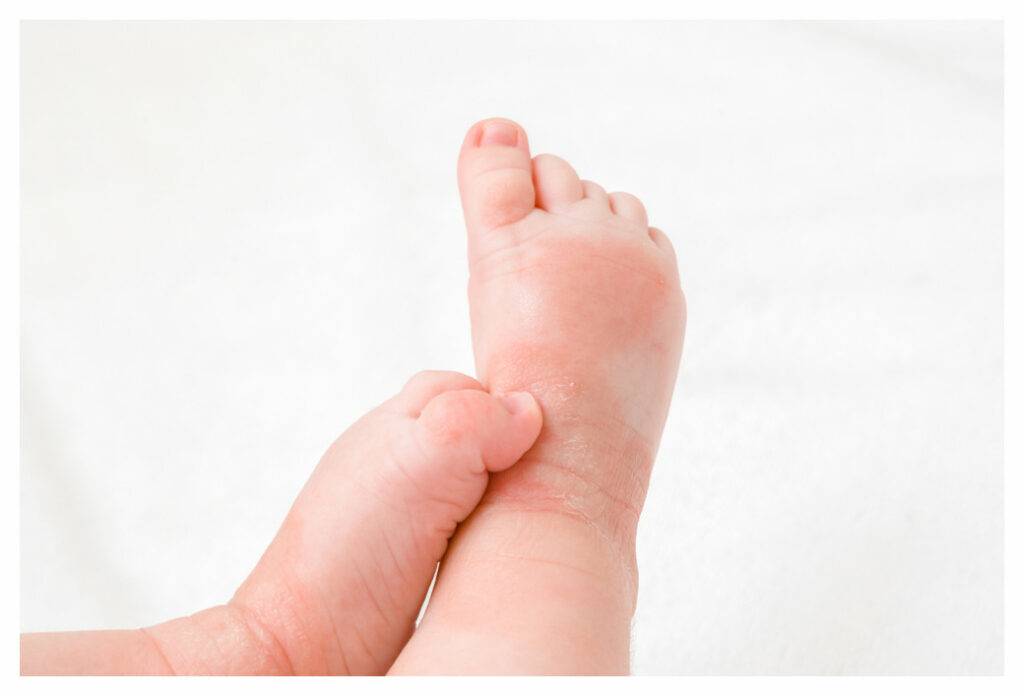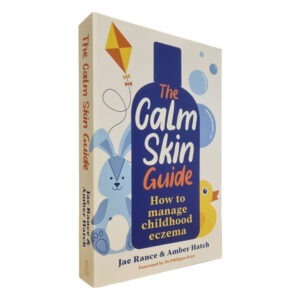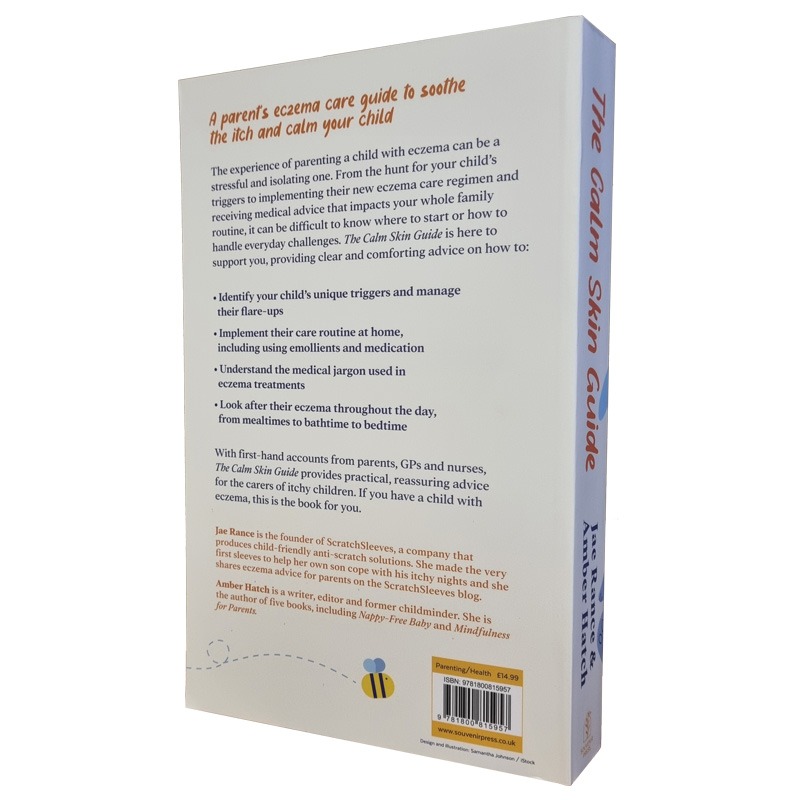How to manage an eczema flare-up



Have large areas of your child’s skin suddenly erupted into a red, itchy rash? This is likely to be an eczema flare-up. This short guide will take you through the practical steps you can take to bring your child’s skin back under control. Every eczema flare-up is different so you may not need to follow every step in this guide. But hopefully our experiences will help to get your child’s flare-up under control and your lives back to normal.
What is a flare up?
The sudden return of eczema symptoms after a period of relatively good control is known as a flare-up. Large areas of your child’s skin will suddenly become itchy and inflamed. Flares can sometimes encompass the entire body in as little as a few hours. You may also see small raised bumps that might leak fluid or be crusted. After a few days the skin may thicken and crack.
Eczema flares-up may be clearly related to something that your child has eaten or something that has changed in their environment, like touching a pet or a change in the weather. Sometimes, the cause of the flare will become more obvious over time as new teeth come through, your child has a sudden growth spurt, or an illness takes hold, like a cold or stomach bug. Other times, frustratingly, there will be no discernible cause.
Regardless of the cause, you will need to try and get the flare-up under control and your little one’s skin back to normal.
9 steps to manage an eczema flare-up
1. Take a deep breath
Realistically, managing an eczema flare-up isn’t something that you alongside everyday life. Give yourself permission to take this as seriously as you would any other illness that your child may have. That means you might need to take a break – literally. Think about how you can clear space in the diary for the next few days. Call in favours from friends and family. Take the day off work and/or nursery. Push back non-urgent errands and consider cancelling outings that might be too much to handle.
2. Check for triggers
Check for known or obvious new triggers and, if possible, remove or ameliorate them. If flare is related to illness, be sure to treat the illness as well. Lots of cuddles and TLC. If the trigger isn’t immediately obvious don’t waste energy worrying about the cause of the flare-up and focus on treating the symptoms. Leave the eczema detective work until after you have the flare under control.
3. Step up you skin care routine
This is especially true if the weather has changed recently. Or if you suspect that a slip in the skin care routine may be the cause of the flare-up. If you have been religiously sticking to your usual skincare routine, consider increasing the number of times you apply emollients per day or switching to greasier emollient, with a higher lipid content. It is not uncommon for a given emollient to stop being as effective over time, in which case switching to another brand may help. You may discover that you need to rotate through 2 or 3 brands, perhaps depending on the time of year.
4. Break out the steroid creams
Break out the steroid creams: a short period (1-2 weeks) of using steroid creams will bring most eczema flares ups back under control.
- If you don’t have any, call your doctor’s surgery, explain that your child’s eczema has flared up and ask for an emergency appointment. If you can’t get a same day appointment, take photos of your child’s skin so your doctor can see the extent and severity of the flare-up and judge whether it is getting worse or better.
- Steroid creams should only be used once a day, unless you have been told otherwise by your doctor. Apply enough to make the skin glisten and leave 15 minutes before applying emollients. Continue using the steroid cream for 2 days after the skin looks normal to ensure the skin has healed fully. For strong steroid creams, follow your doctor’s advice for tapering their usage.
- Steroid creams should work quickly. If the flare isn’t coming under control within a week of starting using them or your child’s eczema flares again soon after you stop using the steroid cream, contact your GP. Your child may need stronger steroids or other treatments to get their eczema back under control.
5. Make sure your child is sleeping as well as possible
Sleep is a great healer for both your child and the rest of the family.
- Make sure you do plenty of things during the day so your child is properly tired by bedtime. This sounds obvious, but is easy to forget in the midst of a flare up. Especially if going out involves dealing with unsolicited comments about your child’s skin.
- Stick with your usual bedtime routine as far as possible. Straying from your usual routine can unsettle little ones, making it harder for them to sleep.
- Warm baths are often soothing, but can also be the chance for a good scratch. Make sure your little one’s hands are busy by loading up the bath with toys. Kids love novelty so try giving them toys that don’t normally go in the bath. Anything waterproof will do – Duplo, action figures, stacking cups. Adding oatmeal or Epsom salts to bathwater can help to calm the skin. But only do this if you already know that your child’s skin isn’t irritated by these bath additives.
- Make sure the bedroom is cool, around 16-18 °C and that your child’s cot/bed is well away from the radiator. In the summer, bottles of frozen water next to the bed will cool the air, especially if you point a fan at them. Check that your child’s bedding isn’t too warm for the time of year. Using multiple thin layers makes it easy to adjust their temperature during the night.
- If your child is struggling to sleep, consider using antihistamines for a few days. As well as suppressing the itch, the drowsiness that they induce can help some itchy little ones to get to sleep.
- Don’t worry if you need to change your child’s sleeping arrangements during a flare-up. It is more important that they can sleep as well as possible to give their skin the best chance of healing. You can deal with re-establishing your preferred sleeping arrangements when their skin has healed.
6. Minimise scratching
Try to minimise any scratching damage and, if possible, don’t let your child get into the habit of scratching. As long as eczema patches are being scratched, the skin won’t get the chance to heal completely. This can mean that the eczema can persist for weeks and months. As with most things related to eczema, this is easier said than done as it’s a natural instinct to scratch an itch. It will be a case of trial and error to find what works for you and your child. Keeping their fingernails short can help, but babies’ fingernails can be razor sharp whatever their length..
- Covering your child’s hands may also help. Look for mittens with a smooth, dense weave that their fingernails can’t work through and which your child can’t remove the moment your back is turned. Sleepwear with built in mitts can be really helpful at night-time. Again, look for smooth mitts as your child is likely to rub even if they can’t scratch.
- Rather than scratching, babies often rub their itchy face against anything they find themselves near. Avoid wearing scratchy woollen jumpers or embellished tops when you are cuddling your itchy little one and make sure that everything in their environment is smooth. Watch out for velcro on activity toys.
- Some eczema creams include anti-itch ingredients which act as a local anaesthetic. These creams can usually only be used twice a day but can be really useful when the itch is really annoying, especially at bedtime. We swear by E45 Itch Relief cream.
- The itch sensation can sometimes be reduced by gently tapping the itchy area or using acupressure points. It’s never too early to start using these techniques.
- If at all possible, avoid telling your child not to scratch. Instead distract them and, if necessary, gently remove their finger from the itchy bit. Or you can suggest that they tap or pinch the itch bit instead.
7. Watch for skin infections
Watch for skin infections, especially if your little one has broken the skin with their scratching. Infected eczema appears redder or darker than healthy skin, there may be clear fluid oozing from the skin, a yellow crust on the skin surface or small yellowish-white spots appearing in the eczema. Your child may also be feverish, hot and shivery and generally feeling unwell. If you suspect an infection, book an emergency GP appointment as it is likely that your child will need antibiotics. Your doctor will also want to review your child’s skincare routine to prevent any further infections. If your child is scratching a lot, consider using bleach baths as a preventative measure.
8. Eat well
- For younger children, this means focusing on supporting their liver function with a diet rich in vitamins C and B6 and flavonoids. Aim for plenty of coloured fruit and vegetables together with potatoes (regular and sweet), salmon, lentils, bananas, beef and chicken for their B6 content. You can read more here.
- For older children with persistent eczema and frequent flare-ups that have no obvious triggers, it may be worth investigating whether they are sensitive to chemicals within some foods. Salicylates and amines occur naturally in many foods and are thought to aggravate eczema in some people. Read more here.
- Eating well can also help you cope with your own stress. Oily fish, eggs, pumpkin seeds and dark chocolate are all good foods for helping the body deal with stress and anxiety.
9. Manage your stress
Watching your child’s skin deteriorate during an eczema flare-up is horrible. As a parent you can feel so powerless to help your child. It’s easier said than done, but try not to get stressed and anxious. If this isn’t possible, do your best to hide these feelings from your child. Stress is contagious and a well-known eczema trigger. Keep your little one calm and happy with lots of positive attention to distract them from the itch.
Try to stick to your normal routine as much as possible. Make sure that you laugh together, even if that means watching funny cat videos online. If you can, leave your child with a trusted adult while you take some time for yourself with friends or doing something that relaxes you. Your child’s eczema is likely to be all consuming, but try to think about something else for a while. Don’t feel guilty about leaving your child with someone else for a short while, you need to keep yourself calm and healthy for your child’s sake.
Managing an eczema flare-up is a case of trial and error. It can feel unrelenting as there is no quick fix, but hopefully this checklist will help you manage to get your child’s eczema back under control.
A note about steroid creams
While steroid creams should not be used in the day to day management of eczema, they are an extremely useful tool for bringing flare-ups back under control. Think of them as the sticking plaster you would use for a badly grazed knee. It’s important to use them as prescribed by your doctor. Make sure that you use enough to make the skin shiny and use them for 2 days after the skin starts to look normal again. Under-using steroids in the early days of a flare-up or stopping them too soon can result in needing to use them for longer.
Most doctors prefer to treat eczema flare-ups ‘hard and fast’ so may prescribe stronger steroid cream for a severe flare-up. This is to minimise the time that your child needs to use steroid creams. Doctors are generally very aware of the risks associated with steroid usage and, while the risks are very low if the creams are used as prescribed, they will be monitoring your child for any negative side-effects. You can find our more about the safe usage of steroid creams here.
Use the time given to you by the steroid creams to understand your child’s eczema triggers, develop a skincare regime, diet and environment that minimises the chances of their eczema flaring up again.
As well as sharing our experience of bringing up an eczema child (and favourite allergy-friendly recipes), we also manufacture and sell our unique stay-on scratch mitts and PJs for itchy babies, toddlers and children. We now stock sizes from 0-adult years in a range of colours and designs. Visit our main website for more information.
The Calm Skin Guide
Love our blog? It's also available in book format with:
- First hand accounts from parents & medical professionals
- Easy navigation
- Comprehensive index
- Additional material
Signed copies available at no extra cost
Written by:
Interesting article? Don't keep it to yourself...
Read next...
You may also find helpful...
Quick buy


Multi Buy Discount

Spend between £30 - £60 and save 5%
Spend between £60 - £120 and save 10%
Spend over £120 and save 15%
Discount automatically applied at checkout
No Quibbles Guarantee

ScratchSleeves abide by a no quibbles guarantee.
Free UK Postage

Free packing and postage on all UK orders. For overseas orders to Europe postage is from £3.50, to USA is £6.50 and to the rest of the world, from £3.75.







